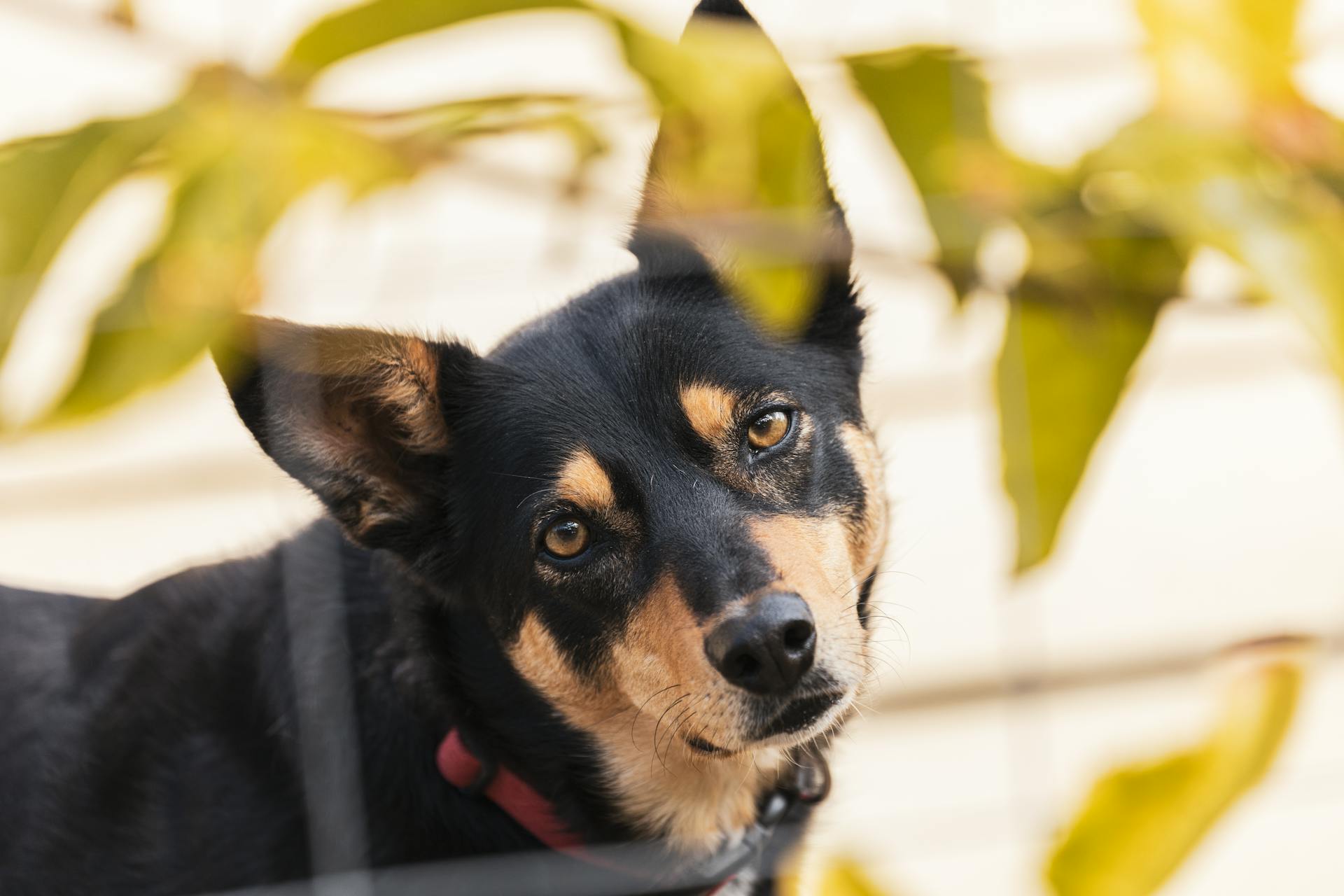
The Working Kelpie is a high-energy breed that requires regular exercise and mental stimulation to prevent boredom and destructive behavior. They need at least 1-2 hours of exercise per day, which can include running, agility training, and playtime in the yard.
Their intelligence and strong work ethic make them a popular choice for farmers and ranchers, who use them to herd livestock. With proper training, a Working Kelpie can learn to navigate complex terrain and respond to commands in a variety of situations.
In addition to their physical needs, Working Kelpies also require regular grooming to prevent matting and tangling of their coat. They shed heavily during shedding season, which typically occurs in the spring and fall.
Their strong prey drive and high energy levels mean that they are not suited for apartment living or homes with small pets. They need space to run and play, and a secure yard is essential to prevent escape attempts.
Breed Characteristics
The Australian Working Kelpie is a medium-sized dog with a short, flat, and straight coat that comes in a variety of colors including black, chocolate, red, smoky blue, fawn, or black and tan.
They are known for being intelligent, alert, and eager, making them a joy to be around. Their high energy levels require regular exercise, which is essential for their overall health and happiness.
Here are some key characteristics of the Australian Working Kelpie breed:
- Size: Medium
- Weight: 35-45 pounds
- Lifespan: 10-14 years
- Coat: Short, flat, and straight coat
- Temperament: Intelligent, alert, and eager
Their high energy levels also mean they are best suited to very active owners, including families, who live on large properties with plenty of space to run around. They are not an apartment dog and require regular brushing, bathing, and clipping to maintain their coat.
Quick Facts
The Australian Kelpie is an incredible breed with some truly unique characteristics.
Originating from Australia, this breed is a part of the Herding group.
Here are some quick facts about the Australian Kelpie:
- Size: 35-45 pounds
- Lifespan: 10-14 years
- Coat: Short, flat, and straight coat that can be black, chocolate, red, smoky blue, fawn, or black and tan
- Exercise needs: High
- Training needs: Easy to train
The Australian Kelpie is known for being intelligent, alert, and eager, making them a joy to be around.
Size
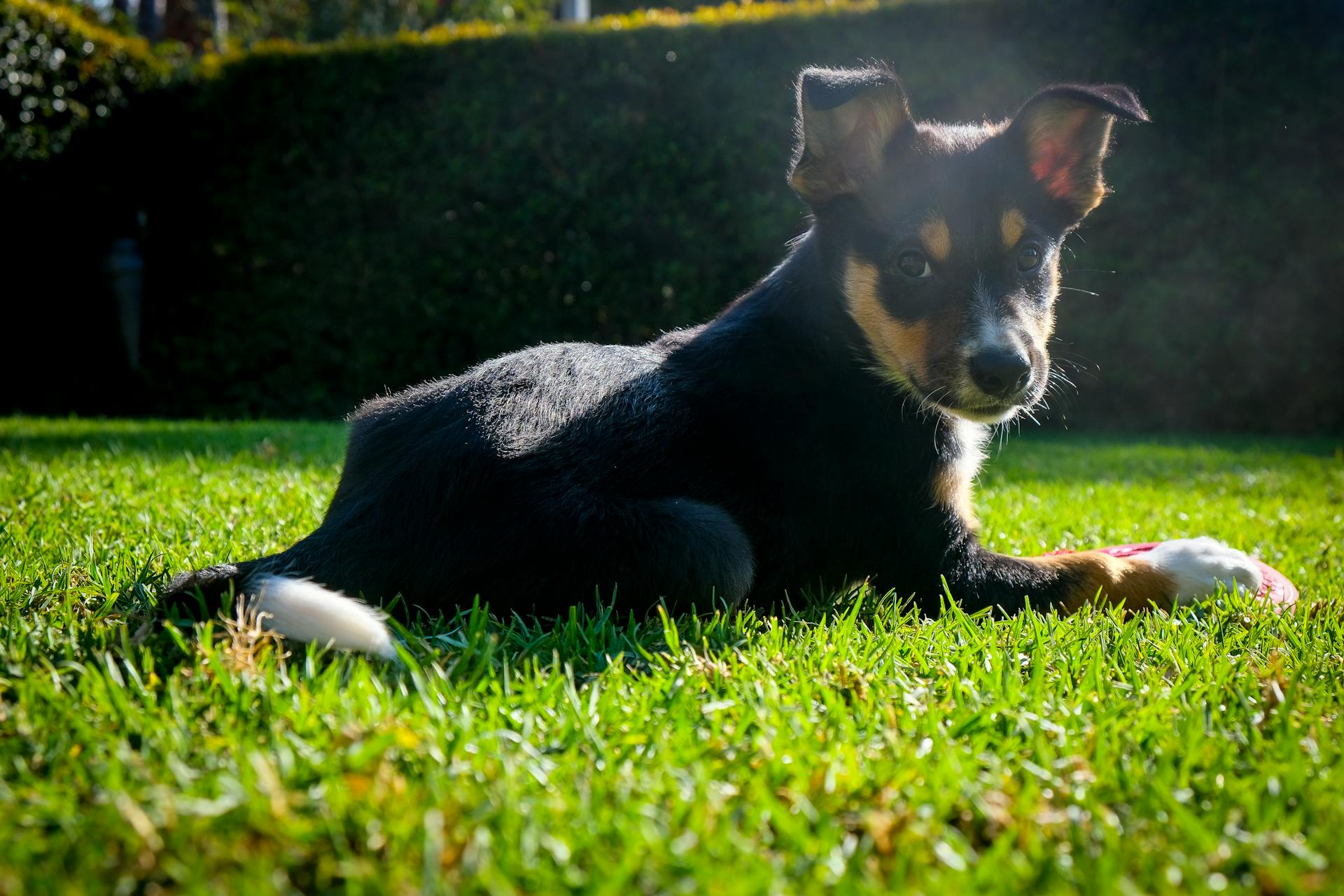
The Working Kelpie is a medium-sized breed that stands out in many ways. They typically stand between 19 to 25 inches in height.
One of the most notable features of the Working Kelpie is their versatility in size, with a weight range of 28 to 60 pounds. Females tend to be smaller than males.
Here are the specific size ranges for Working Kelpies:
- Height: 19 to 25 inches
- Weight: 28 to 60 pounds
Their robust size and adaptable nature make them suitable for a variety of environments.
Care and Feeding
To keep your Working Kelpie happy and healthy, they need a lot of exercise. Provide at least an hour of high-intensity exercise daily, and consider adding fetch and agility tasks to their routine.
Their diet is also crucial. Feed them a high-quality dog food that's formulated for medium-sized breeds with high energy levels. Aim for a diet that includes around 250 grams of meat, 125 grams of dog flakes, and 125 grams of vegetables daily.
You'll also want to pay attention to their dental hygiene and nail care. Brush their teeth at least two or three times a week to remove tartar buildup, and check their nails once a month to see if they need to be trimmed.
Here's a quick rundown of what to avoid feeding your Working Kelpie:
- Almonds
- Cinnamon
- Chocolate
- Ice cream
- Onions
- Garlic
- Grapes
- Raisins
- Anything containing xylitol (birch sugar)
By following these care and feeding guidelines, you'll be well on your way to raising a happy and healthy Working Kelpie.
Health
Working Kelpies are generally healthy, but like all breeds, they can be prone to certain health issues. Collie Eye Anomaly (CEA) is a genetic eye disorder that primarily affects Collie breeds, including Working Kelpies, and can lead to varying degrees of vision impairment.
Elbow issues are also common in Working Kelpies, including elbow dysplasia and elbow arthritis, which can cause pain, lameness, and decreased mobility. These conditions can be caused by joint wear and tear over time.
A different take: Australian Working Kelpies
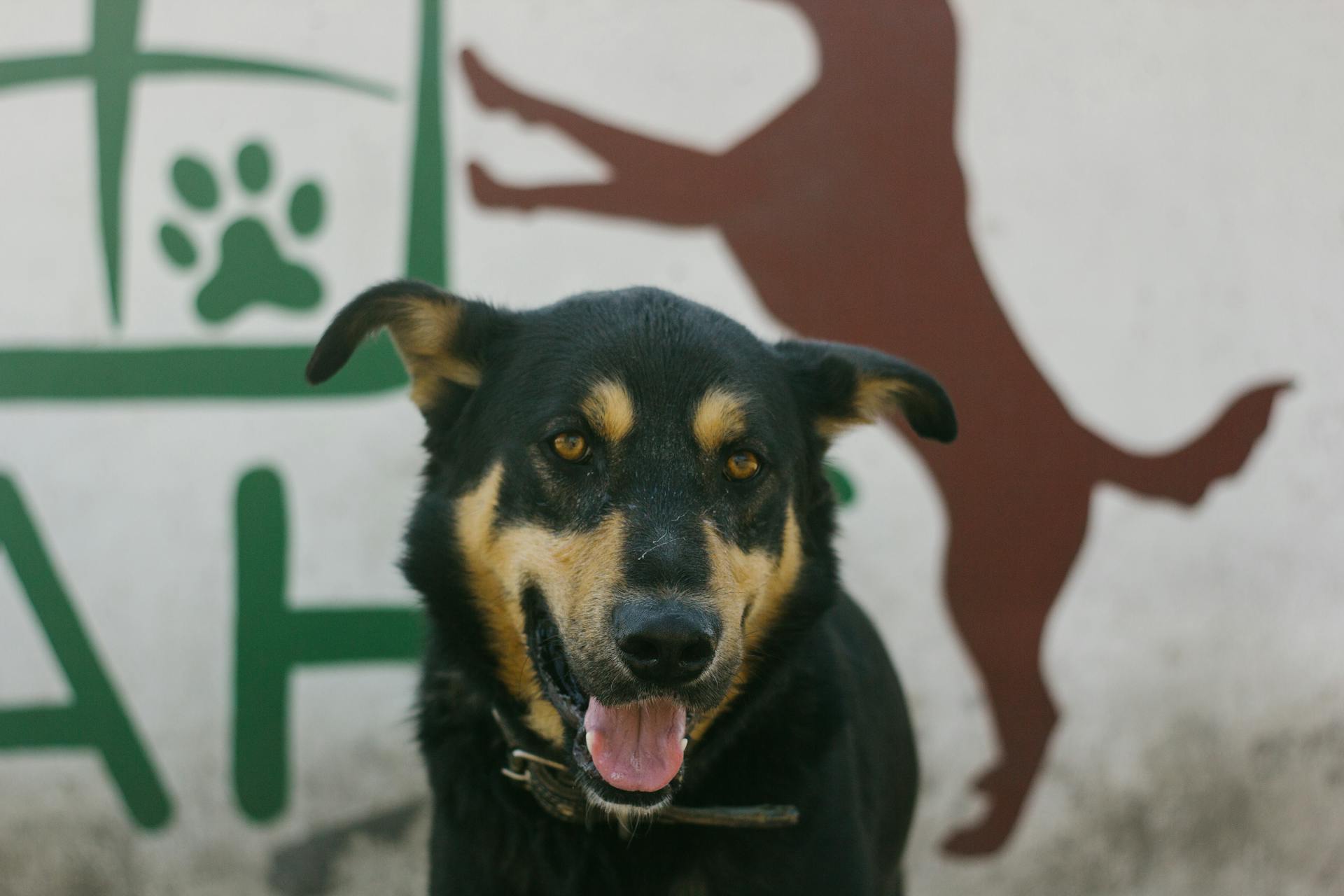
Progressive Retinal Atrophy (PRA) is another hereditary eye disease that can affect Working Kelpies, leading to progressive vision loss and eventual blindness. Early diagnosis through veterinary eye exams and genetic testing can help breeders and owners make informed decisions.
To keep your Working Kelpie healthy, it's essential to provide them with a balanced diet that meets their energy needs. Energy-dense, high-quality food is ideal for active Working Kelpies, and your veterinarian or breeder can advise on the best diet for your dog.
Excess weight can contribute to joint disorders like arthritis, elbow dysplasia, and hip dysplasia, so it's crucial to monitor your Working Kelpie's weight and adjust their diet accordingly. For example, older Kelpies or those recovering from an injury may need a lower-calorie diet to prevent weight gain.
Here are some common health issues to be aware of in Working Kelpies:
- Collie Eye Anomaly (CEA)
- Elbow dysplasia
- Elbow arthritis
- Progressive Retinal Atrophy (PRA)
Care
Providing your Working Kelpie with enough exercise is crucial, as they require well over an hour of high-intensity exercise every day.
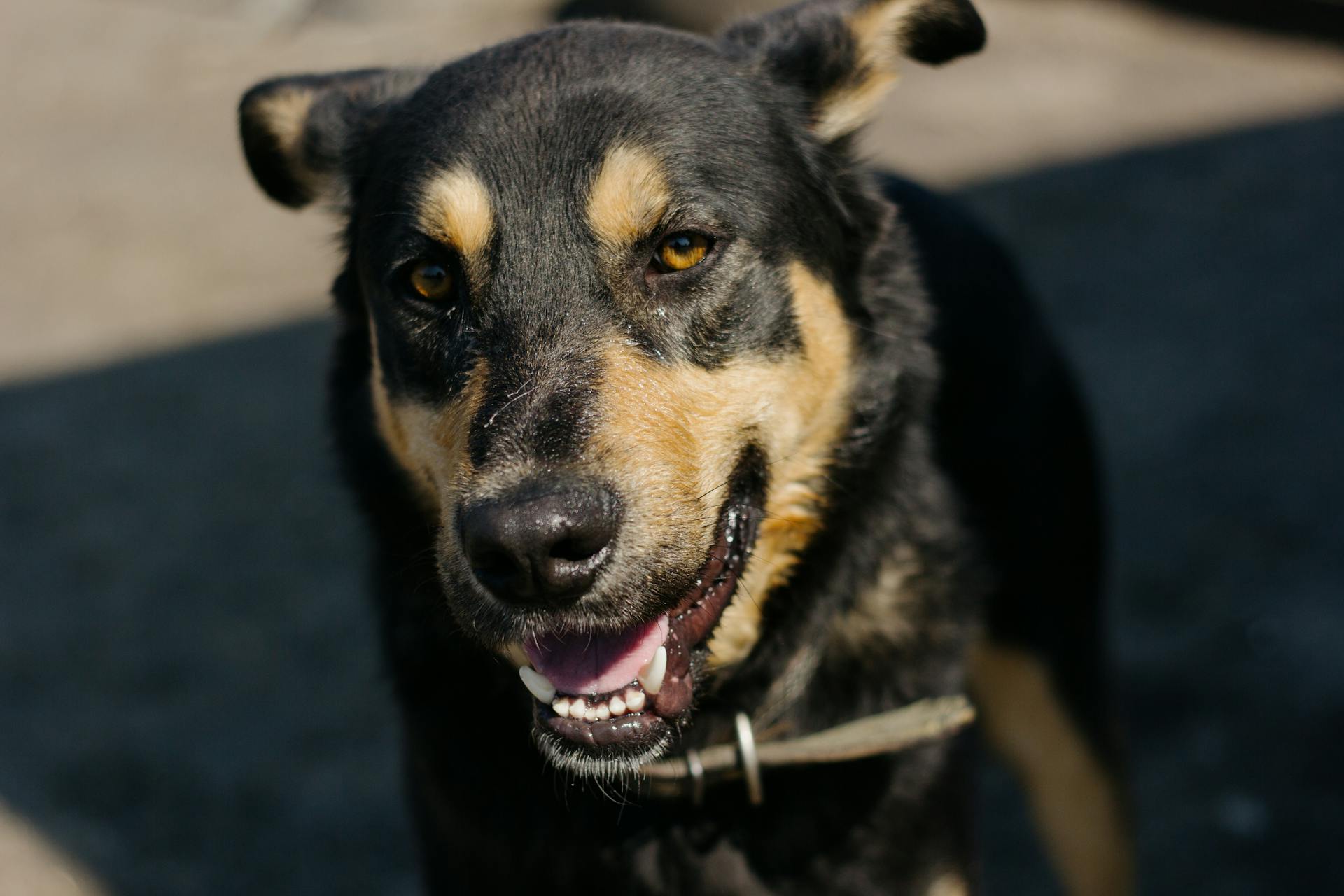
To keep your Working Kelpie happy and engaged, incorporate fetch and agility tasks into your daily exercise routines, as these activities will help prevent boredom and destructive behavior.
A large fence that cannot be scaled is essential for your Working Kelpie's outdoor space, as they are very athletic dogs.
Daily dental hygiene is a must, with brushing your Working Kelpie's teeth at least two or three times a week to remove tartar buildup and accompanying bacteria.
Working Kelpies have a medium-length coat that can adapt to most weather conditions, but may require a coat during cold months and dog-safe sunscreen during the summer.
Their nails should be checked once a month and trimmed if necessary, although sufficient outdoor time can keep them in great condition naturally.
Australian kelpies are bred to work all day in difficult conditions, so they need an extreme amount of exercise.
If your Working Kelpie is primarily a pet, be prepared to offer hours of daily exercise and mental engagement, whether through jogging, hiking, or other activities.
High energy breeds like Working Kelpies require significant daily physical exercise, with at least two hours of intensive exercise or 30 minutes of vigorous aerobic activity most days.
Engaging your Working Kelpie in dog sports, obedience training, and interactive games can keep their minds sharp and engaged.
Insufficient exercise can result in restlessness and undesirable behaviors like chasing cars, making constant companionship essential to avoid isolation.
Nutrition and Feeding
A balanced and nutritious diet is vital to maintain the health, energy levels, and weight of your Working Kelpie. A well-balanced diet for a Working Kelpie should include around 250 grams of meat, 125 grams of dog flakes, and 125 grams of vegetables daily.
Protein-rich meat such as chicken, beef, lamb, or turkey is essential for maintaining muscle mass and energy levels in Working Kelpies. Organ meats like liver, kidneys, heart, and tripe are also beneficial for their vitamin and mineral content.
Vegetables like carrots, sweet potatoes, and broccoli are recommended to provide vitamins and minerals not found in meat. It's essential to avoid feeding Working Kelpies certain foods like almonds, cinnamon, chocolate, ice cream, onions, garlic, grapes, raisins, and anything containing xylitol.
A daily diet of 250 grams of meat, 125 grams of dog flakes, and 125 grams of vegetables is a good starting point, but consult with your veterinarian to determine the best diet for your individual Working Kelpie.
Here's a breakdown of the daily diet:
- Meat: 250 grams (choose from chicken, beef, lamb, or turkey)
- Dog flakes: 125 grams
- Vegetables: 125 grams (choose from carrots, sweet potatoes, and broccoli)
Remember, a high-quality diet is essential for maintaining your Working Kelpie's health and energy levels.
Looking After Me
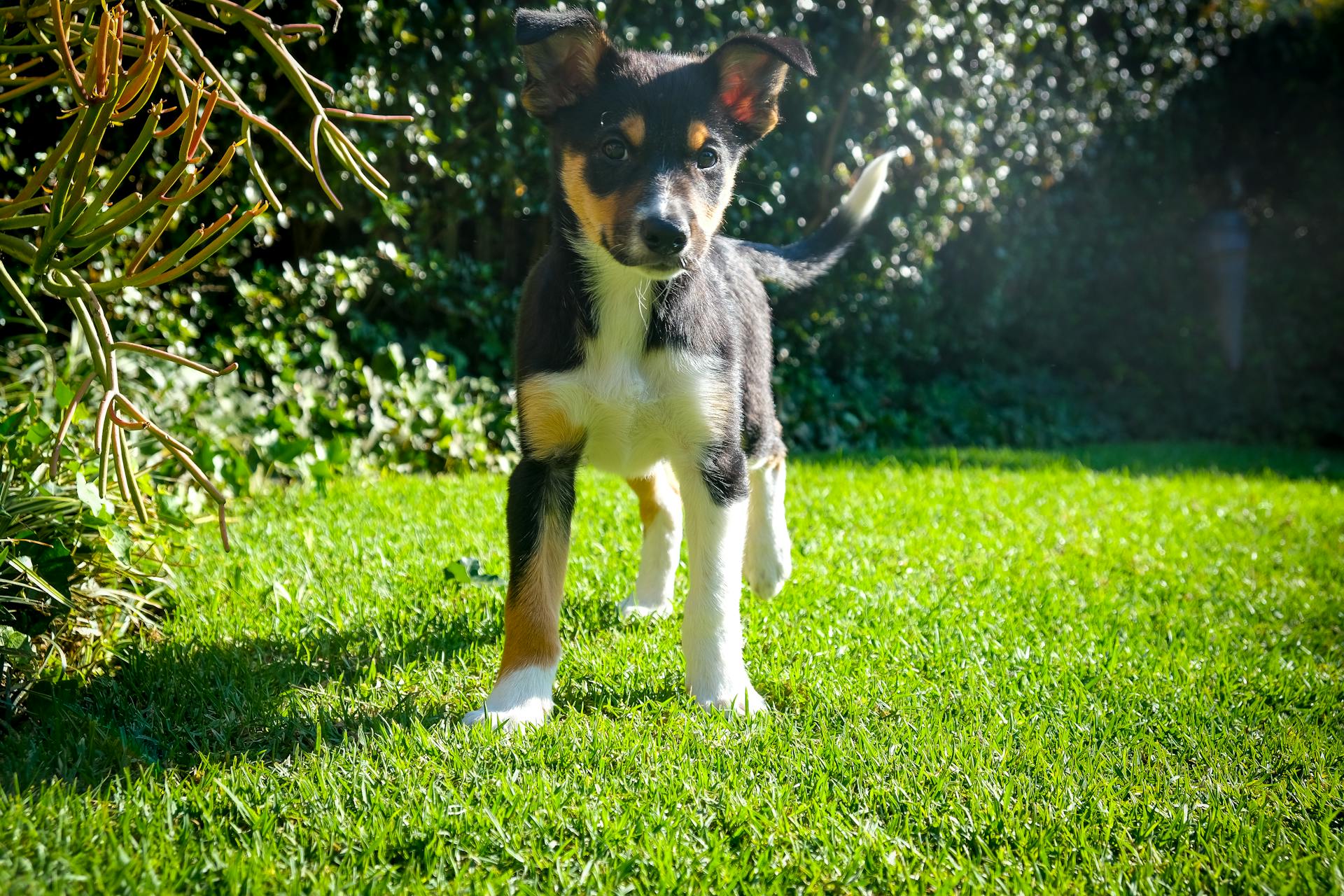
A Working Kelpie's life expectancy is between 12-15 years. They are a relatively healthy breed, but it's essential to be aware of potential health issues.
Eyes diseases such as Progressive Retinal Atrophy (PRA) can cause blindness, so it's crucial to check the medical history of a puppy's parents.
Australian Working Kelpies are not fussy eaters and can thrive on high-quality dog food fed once or twice a day, depending on the packaging recommendations.
They also love the occasional meaty bone, especially if they're working all day.
Their water-resistant double coat requires minimal maintenance, but be warned that they shed a lot if kept indoors.
A weekly brush and occasional bath are usually enough to keep their coat in good condition.
Here's a rough guide to their coat types: smooth, short, or rough.
Check this out: My Dog Barks All Day While I Am at Work
Physical Appearance
The Australian Working Kelpie is a medium-sized dog with an athletic build and a smooth coat. They are slightly smaller than their show or "Bench" Kelpie cousins that are more often pets.
Their shiny coat comes in a range of colors, including solid black, red, fawn (brown), blue (dark grey), and cream, or a mix of these colors. Frequently, you'll see striking combinations like black-and-tan or red-and-tan.
The Working Kelpie stands between 19 to 25 inches in height, with females tending to be smaller than males. They weigh between 28 to 60 pounds.
Here are some key physical characteristics to keep in mind:
- Height: 19-25 inches
- Weight: 28-60 pounds
The breed's average size and life expectancy make them robust and adaptable, able to thrive in a variety of environments. Their coat is also versatile, with a moderate weather-resistant outer coat and a possible short, dense undercoat.
Living with a Kelpie
Living with a Kelpie requires some thought and planning. A Working Kelpie's strong attachment to its owners means they thrive on companionship and regular interaction.
To ensure your Kelpie feels happy and content, provide an environment where it can use its natural energies through regular exercise and playtime. This can be as simple as a game of fetch in the backyard or a walk in the park.
Proper training and socialization are key to ensuring your Kelpie understands boundaries and is well-behaved within the house. This is especially important for Kelpies, who need early socialization to promote friendliness with dogs and strangers.
To socialize your Kelpie, expose them to various environments and social contexts, introduce them to different people and animals, and take them to puppy classes or obedience training. Providing positive experiences with new situations and stimuli is also crucial.
Supervision is essential when Working Kelpies interact with children, as they are naturally gentle but still require guidance. With proper care and attention, they can form strong bonds with all family members.
Here are some tips to promote friendliness with dogs and strangers:
- Expose your Kelpie to various environments and social contexts
- Introduce them to different people and animals
- Take them to puppy classes or obedience training
- Provide positive experiences with new situations and stimuli
Training and Socialization
Training and socialization are crucial for a Working Kelpie's development into a well-behaved and balanced pet. With the right approach, you can shape your Working Kelpie into a loyal and affectionate companion.
Australian Kelpies are extremely smart and compliant, making them eager to learn new skills. They can be trained to do just about anything, and positive reinforcement methods like clicker training give great results.
Early socialization is also integral to a Kelpie's upbringing. Introducing them to a variety of dogs and family members at a young age helps foster positive relationships and ensures they grow into sociable, well-adjusted adults.
Here's a step-by-step guide to training and socializing your Working Kelpie:
- Begin obedience training using positive reinforcement, especially at a young age.
- Teach basic commands like stop, sit, stay, and release in a distraction-free setting.
- Progress to more complex environments over time.
Working Kelpies thrive on mental stimulation, so engage them in puzzle toys and interactive games. This will help prevent boredom and frustration, which can lead to bad behavior.
To manage frustration and prevent bad behavior, incorporate activities like fetch and agility tasks into your training sessions. This will also help your Working Kelpie develop physically and mentally.
History and Origins
The Working Kelpie's history dates back to the 1870s in Australia, where it was developed as a working dog.
The breed was originally developed from a set of three pairs of working Collie dogs, with J.D. Jack Gleeso crediting one of these dogs with the name Kelpie.
The Working Kelpie was intended to work with sheep, and its ancestors were medium-sized working collies from Scotland.
These dogs were imported into Australia in the late 1800s to help farmers manage their large flocks of sheep.
The name "Kelpie" comes from a shape-shifting aquatic creature in Celtic mythology, and was given to a foundation female dog of the breed.
The Australian Kelpie is recognized by the United Kennel Club as a member of the Herding Dog Group, and is also recognized by the Fédération Cynologique International.
Check this out: Sheep Guard Dogs Maremma
Origins and History
The Working Kelpie's history dates back to the 1870s, when it was developed in Australia as a working dog.
The breed was originally developed from a set of three pairs of working Collie dogs, with a breeder named J.D. Jack Gleeso crediting one of these dogs with the name Kelpie.
Working Kelpies were intended to work with sheep, and early on, they proved to be impressive sheepherders.
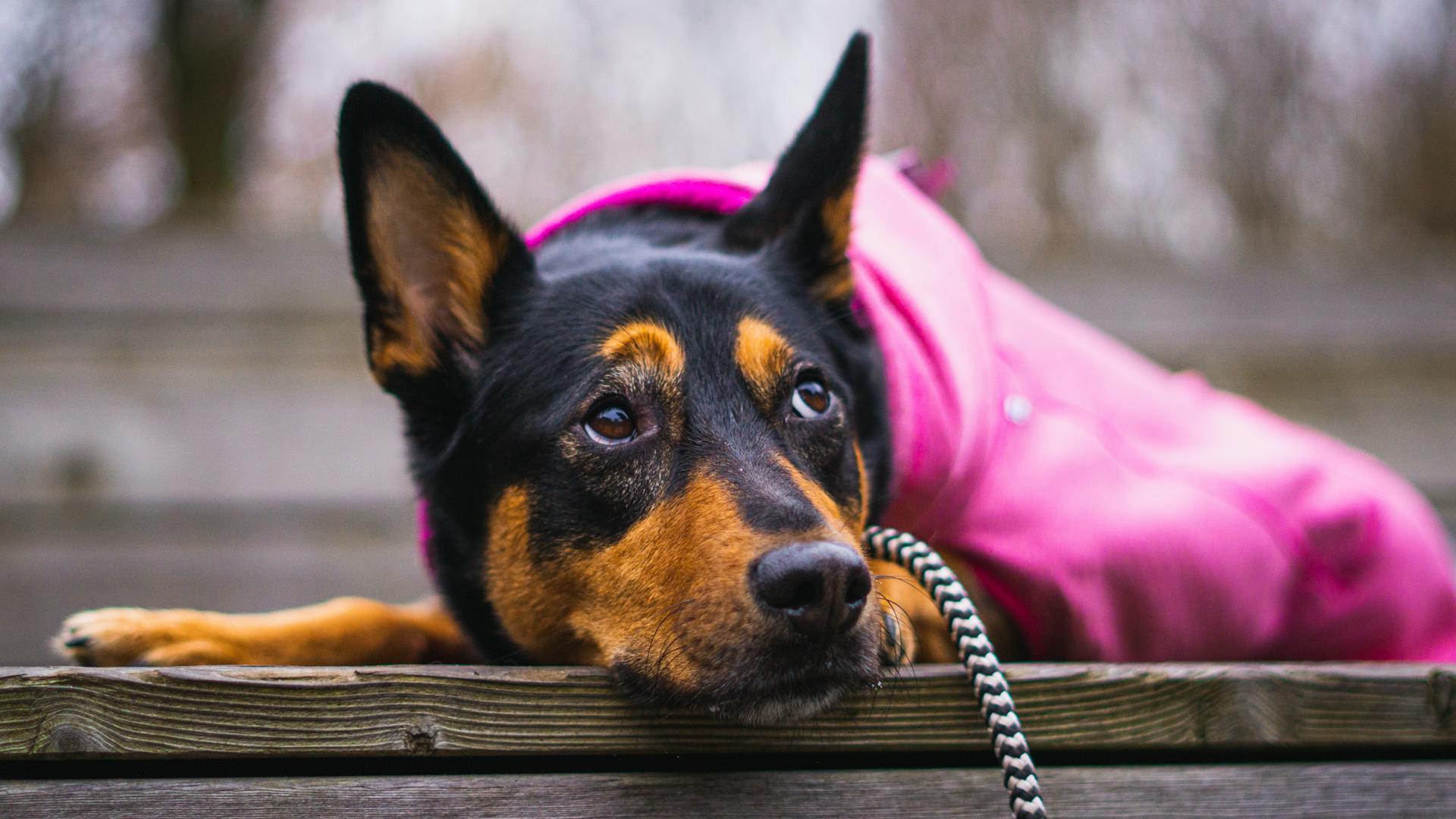
The name "Kelpie" actually comes from Celtic mythology, referring to a shape-shifting aquatic creature.
In Australia, the Working Kelpie was molded into the breed we know today, shaped by the unique environment and working conditions of the Australian outback.
The Working Kelpie's true home lies in Australia, where they were put to work rounding up stock with only the strongest dogs surviving the extreme outback conditions.
A mix of hardy dogs, possibly crossed with the dingo, eventuated into the Australian Working Kelpie we know today.
The Australian Working Kelpie was officially recognized by the Australian government in 1902, one of the country's first registered dog breeds.
Despite their Scottish roots, the Working Kelpie's history paints a picture of a breed that has been shaped by the demands of their environment and work.
Genetic research has debunked the myth that Working Kelpies share a common DNA with dingoes, asserting their unique lineage.
The Working Kelpie's breed was recognized by the American Kennel Club as a distinct breed, separate from the Australian Kelpie, although the United Kennel Club considers both as one breed.
The Australian Kelpie, on the other hand, is recognized by the United Kennel Club as a member of the Herding Dog Group and by the international kennel club Fédération Cynologique International.
On a similar theme: Dog Friendly Work Environment
Breed Society
The Breed Society played a crucial role in the development of purebred dogs.
Many breed societies were formed in the 19th century, with the first being the English Kennel Club in 1873.
These societies established breed standards, which helped to refine and define the characteristics of specific breeds.
The breed societies also created breed clubs, which brought together breeders and owners to promote and preserve their favorite breeds.
In many cases, breed societies were instrumental in gaining recognition for new breeds, such as the Bulldog, which was recognized by the English Kennel Club in 1875.
The breed societies' efforts helped to standardize breeds, making it easier for people to identify and distinguish between different breeds.
Discover more: Breeds of Police Dogs
Acquiring a Kelpie
Acquiring a Kelpie can be a bit of a challenge, but it's worth it for the right owner. Expect to pay a breeder $500 to $1,500 for a kelpie puppy.
If you're looking for a rescue, you might have to dig a bit deeper. North American Working Australian Kelpie Registry and Working Kelpies of America are great resources to start with.
You can also try contacting local shelters or rescue groups that cater to all breeds. Wright-Way Rescue and Angels Among Us Pet Rescue are two organizations worth reaching out to.
If you're set on buying from a breeder, AKC Kelpie Breeders is a good place to start your search.
Tips and Advice
If you're seeking a devoted herding dog or an energetic family companion, the Working Kelpie may be your answer.
These dogs require an engaging environment to match their spirited nature, so it's essential to provide them with plenty of exercise and mental stimulation.
The Working Kelpie's intelligence and stamina make them a great fit for active families who can keep up with their energetic presence.
To integrate their dynamic presence into your daily routine, consider enrolling them in obedience training or agility classes to channel their energy and intelligence.
With their high energy levels, Working Kelpies need at least 1-2 hours of exercise per day, which can include activities like running, hiking, or playing fetch.
Providing a variety of toys and interactive games can help keep them engaged and entertained when you're not able to provide direct attention.
For more insights, see: How to Keep Dog Busy While at Work
Frequently Asked Questions
What is the difference between Working Kelpie and kelpie?
The main difference between a Working Kelpie and a Kelpie is their purpose: Working Kelpies are bred for their working ability, while the general term "Kelpie" can refer to either the Show or Working variety.
Are Kelpies a good family dog?
Yes, Kelpies are a great choice for families with children, known for their loyalty and affection towards their loved ones. However, their herding instincts may require extra attention and training to ensure a harmonious household.
Sources
- https://dogtime.com/dog-breeds/working-kelpie
- http://www.wkc.org.au/About-Kelpies/The-Working-Kelpie-As-A-Pet.php
- https://bondivet.com/blogs/dog-breeds/kelpie-dog-breed-characteristics-origin-and-care
- https://www.thesprucepets.com/australian-kelpie-dog-breed-profile-5116895
- https://furlyfe.com/dog-breeds/working-kelpie/
Featured Images: pexels.com


